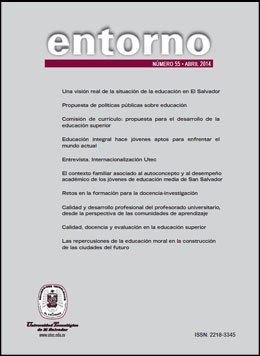The municipality of Huizúcar: stories, patrimonies and identities, through of the history of its inhabitants
DOI:
https://doi.org/10.5377/entorno.v0i56.6261Keywords:
Huizúcar, histor, heritage, identities, popular religiosity.Abstract
Within the Salvadoran territory, there are currently many locations with minimal or partial knowledge of their origins, their stories, and their heritage, as well as other elements that constitute and are part of their identities. The area of Huizúcar, located south of San Salvador, has been presented throughout its history as one of the places with a nahua-pipil speaking population of indigenous descent, along with other municipalities located in the same range. The villa of Huizúcar is also known for its Colonial period Catholic Church dedicated to St. Michael the Archangel, which is a colonial architectural work of great historical value. The heritage assets of material culture and the expressions of a living culture in all its inhabitants are essential components in the construction of the history of the people of El Salvador.
Entorno, august 2014, issue 56: 22-36
Downloads
703
Downloads
Published
How to Cite
Issue
Section
License
© Entorno
It is required that the authors transfer the right of re-production of their articles to the Entorno Journal

